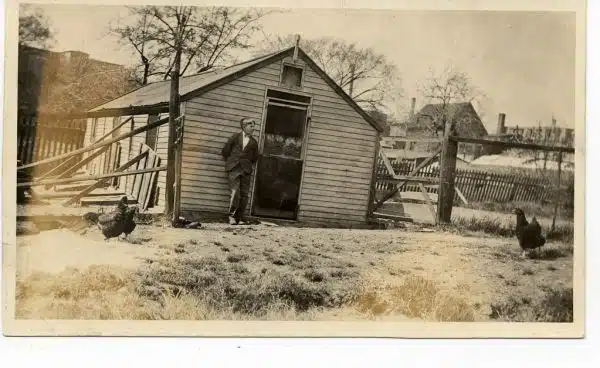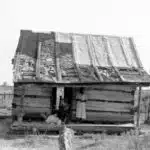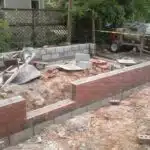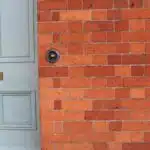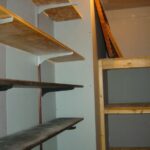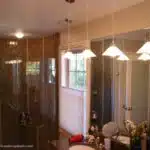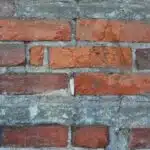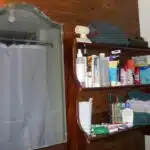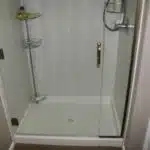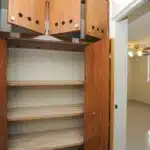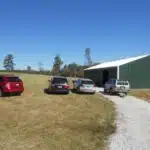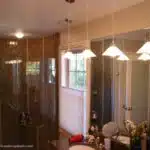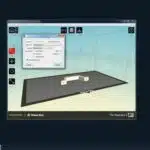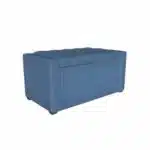For those who are in need of extra storage space on their property, building a lean-to shed can be an affordable and practical solution. A lean-to shed is a simple structure that can be attached to an existing wall or building, providing additional space for tools, equipment, and other items. While it may seem like a daunting task for those without carpentry experience, with the right tools and instructions, building a lean-to shed can be accomplished by anyone.
In this article, we will provide step-by-step instructions for building a basic lean-to shed. We will cover the necessary materials, tools, and safety precautions needed to successfully complete this project. Whether you are looking to store gardening supplies or create a home workshop, this guide will provide you with the knowledge and skills needed to build your own functional and cost-effective lean-to shed.
Assessing Your Property For Building A Lean-To Shed
Before you start building your lean-to shed, it is important to assess your property to determine the ideal location for it. The location considerations include the slope and drainage of the site, the distance from other structures, and the orientation of the shed. It is essential to choose a proper location that will ensure your shed’s longevity and functionality.
Firstly, you need to inspect your property’s slope and drainage. Ideally, you should choose a level spot with good drainage to prevent water accumulation around or inside the shed. If there are any low spots where water collects after a rainstorm, it is advisable to fill them in before building your shed. This will not only prevent water damage but also protect any equipment or tools stored in the shed.
Secondly, consider the distance between other structures on your property and where you plan to build your lean-to shed. It is essential to ensure that there is enough space between buildings so that there are no legal issues regarding zoning regulations or fire codes. Moreover, having enough space between structures enables easy access for maintenance purposes.
Finally, think about how you want your shed oriented on your property. You may want it facing away from prevailing winds or with its back against a fence line for added privacy. Additionally, keep in mind any sunlight requirements for plants if you plan on using part of your lean-to as a greenhouse. Assessing these location considerations will provide you with an excellent foundation when planning the design of your lean-to shed.
Transition: Now that we have understood how to assess our property’s suitability for building a lean-to shed let us move onto planning its design without further ado!
Planning Your Lean-To Shed Design
- When building a lean-to shed, it is important to ensure that you have all of the necessary materials before beginning the project.
- The location of the shed is also an important factor to consider, as it needs to be in a place that can accommodate the size and structure of the shed.
- In terms of design elements, there are various options available to choose from including wood, metal, and plastic.
- The type of material used should be determined based on the size and shape of the shed, as well as the climate and environment in which it will be placed.
- Other design elements to consider include the roofing, siding, and flooring, which should be selected based on the specific needs of the shed.
- Finally, it is important to make sure that all of the necessary permits and building codes are followed when constructing the shed.
Gathering Materials
Sourcing materials for your lean-to shed can be an exciting yet daunting task. The materials gathered will determine the durability and functionality of your shed. To ensure that the finished product is cost-effective, start by sourcing materials from local suppliers. This not only helps support local businesses but also saves money on transportation costs.
Choosing wood as the primary material for your lean-to shed is a cost-effective option. Pressure-treated lumber, which is resistant to decay and insect infestation, is ideal for the frame of the shed. For the roof and siding, consider using corrugated metal sheets or fiberglass panels which are durable and less expensive than traditional roofing materials.
In addition to wood and metal sheets, other necessary materials include nails, screws, hinges, and roofing felt. While it may be tempting to opt for cheaper alternatives, investing in quality materials ensures that the shed lasts longer and requires less maintenance in the long run. With careful planning and sourcing of cost-effective options, building a lean-to shed can be both rewarding and budget-friendly.
Location Considerations
When planning your lean-to shed design, it’s important to consider the location where you will be building. Site selection is crucial to ensure that your shed will be functional and durable. One of the main factors to consider is the ground surface. It’s essential to choose a level area, as an uneven surface can cause structural issues with your shed over time.
Another consideration for site selection is environmental concerns. If you live in an area prone to heavy rainfall or flooding, it’s important to choose a location that won’t be affected by these conditions. Additionally, if you live in an area with strong winds or snow loads, it’s important to choose a location that can withstand these weather conditions.
When selecting a site for your lean-to shed, it’s also important to think about accessibility. Ideally, the shed should be located near your home or work area so that you can easily access it when needed. However, it’s also important to make sure that the shed won’t obstruct any walkways or driveways on your property. By considering all of these factors, you can ensure that your lean-to shed is not only functional but also fits seamlessly into your property and lifestyle.
Design Elements
When planning your lean-to shed design, it’s not only important to consider the location where you will be building but also the design elements that will make it both functional and aesthetically pleasing. One of the main design elements to consider is the roof pitch. The pitch of the roof should be steep enough to allow for water runoff, but not so steep that it creates an awkward aesthetic on your property.
Another important design consideration is the size and shape of your lean-to shed. It’s essential to choose a size that meets your needs without being too large or too small for your property. Additionally, consider how the shape of your shed will fit into your overall landscape design. You may want to choose a design that complements or contrasts with your home’s architecture or other outdoor structures.
Finally, when considering design elements for your lean-to shed, think about how you will use the space inside. Storage solutions such as shelving or hooks can help keep tools and equipment organized while maximizing available space. Additionally, selecting materials such as wood siding or metal roofing can add a unique touch to your shed’s overall aesthetic while also ensuring its durability over time. By carefully considering these design elements, you can create a lean-to shed that not only meets your functional needs but also adds beauty and value to your property.
Choosing The Right Materials For Your Lean-To Shed
To build a lean-to shed that is both functional and aesthetically pleasing, choosing the right materials is crucial. There are several cost-effective options available for building a shed, including pressure-treated lumber and plywood sheets. Pressure-treated lumber has been treated with chemicals to resist decay, while plywood sheets provide a sturdy base for the structure.
Sustainable materials are also an excellent option for building your lean-to shed. Cedar and redwood are two popular choices that not only look great but are also resistant to rot and insects. These materials are more expensive than pressure-treated lumber or plywood but will last longer and require less maintenance over time.
When selecting your materials, it’s important to consider the climate in your area. If you live in an area with high humidity or frequent rain, it’s essential to choose materials that can withstand moisture without rotting or warping. It’s also important to select materials that match the design of your home or other outdoor structures.
Transitioning into measuring and cutting your lumber, it’s crucial to have accurate measurements before beginning construction. Take into account any sloping areas or uneven ground when measuring for the foundation of your lean-to shed. Once you have measured everything out correctly, you can begin cutting your lumber to size and preparing it for construction. With the right materials and precise measurements, building a lean-to shed can be a fun DIY project that will add value to your property for years to come.
Measuring And Cutting Your Lumber
To begin measuring and cutting your lumber for your lean-to shed, you will need to gather all necessary materials. This includes a measuring tape, a saw (preferably a circular saw), safety goggles, hearing protection, and work gloves. Before making any cuts, ensure that your workspace is clear of debris and that the saw blade is sharp.
Next, it’s important to understand proper cutting techniques to ensure accuracy and efficiency. When measuring your lumber, use the measuring tape to mark the desired length on each piece of wood. To make straight cuts with a circular saw, use a guide or straight edge to keep the saw blade on track. Always position yourself at a safe distance from the blade and avoid wearing loose clothing or jewelry that could get caught in the saw.
While cutting your lumber, it’s crucial to take safety precautions seriously. Wear protective gear such as safety goggles, hearing protection, and work gloves at all times. Keep your work area well-lit and free of obstacles that could cause tripping hazards. It’s also important to never force the saw through the wood – let the tool do the work for you.
- A well-built lean-to shed can provide years of storage space and protect your belongings from harsh weather conditions.
- Cutting lumber can be dangerous if proper safety measures are not taken seriously.
- Take time to measure accurately before making any cuts to avoid wasting materials or causing unnecessary mistakes.
With your lumber measured and cut properly according to safety guidelines, you’re now ready to move onto building the foundation for your lean-to shed. Prepare yourself with safety gear once again as we move onto this next step in creating a sturdy structure for all of your storage needs.
Building The Foundation For Your Lean-To Shed
The foundation is the backbone of any structure, and your lean-to shed is no exception. Before you start building, you need to make sure that the foundation is sturdy enough to support the weight of your shed. There are two common options for shed foundations: concrete and gravel.
Concrete foundations are a popular choice because they offer good stability and durability. However, they can be expensive and time-consuming to install. If you decide to go with a concrete foundation, make sure it’s poured properly with proper drainage.
Gravel foundations are another option that’s more cost-effective and easier to install than concrete. They also provide good drainage for your shed. However, it’s important to ensure that the gravel is level and compacted before building your shed on top of it. Proper drainage is key to avoiding water damage in your lean-to shed down the line. Once you’ve chosen between these options, it’s time to move onto installing support posts for your lean-to shed.
Transition sentence: With a solid foundation in place, you’ll be able to proceed with confidence as you begin installing the support posts for your lean-to shed.
Installing The Support Posts
With the foundation for your lean-to shed now in place, it’s time to move on to the next phase of construction. Installing the support posts is a crucial step that will ensure the stability and durability of your shed. In this section, we’ll cover the necessary steps to install these posts correctly.
To begin, you’ll need to dig post holes in each corner of your shed. These holes should be at least 3 feet deep and wide enough to accommodate the size of your post. Once you’ve dug your holes, secure brackets at the bottom using concrete or gravel. These brackets will keep your posts securely anchored to the ground and prevent them from shifting or sinking over time.
After securing the brackets, it’s time to install your support posts. Place each post into its respective bracket and fill in any gaps around it with additional gravel or concrete. Ensure that each post is level and plumb before moving on to framing the walls and roof of your lean-to shed. With these steps completed, you can move forward with confidence knowing that you’ve taken all necessary measures to ensure a stable and sturdy structure for years to come.
Moving forward, framing the walls and roof of your lean-to shed will require careful attention to detail as well as a steady hand. By following these instructions step by step, you’ll be able to create a beautiful and functional space that meets all of your storage needs while adding value and curb appeal to your property. So let’s get started!
Framing The Walls And Roof Of Your Lean-To Shed
Framing the walls and roof of your lean-to shed is a critical step in the building process. First, you need to determine the size of the lumber you will use for your wall framing. Consider using 2x4s or 2x6s for added support. Cut your pieces to size and lay them out on your foundation, ensuring they are level and square.
Next, attach your wall framing pieces together using nails or screws. To ensure a sturdy structure, make sure each piece is securely attached to the next. Once all of your walls are framed, it’s time to move onto the roof. There are several roofing options available, including metal panels or shingles. Choose the option that best suits your budget and climate.
When framing the roof, make sure to follow proper techniques to ensure a strong and stable structure. Start by determining the pitch of your roof and cutting rafters to size accordingly. Attach these rafters to a ridge board at the peak of your roof, then add collar ties for additional stability. Once all of this is complete, you can move on to adding roofing materials.
Now that you have framed both walls and roof, it’s time for an exciting step: adding doors and windows! These features not only enhance functionality but also add aesthetic value. Consider adding sliding barn doors or double-hung windows for ease of use and maximum natural light. With careful planning and attention to detail, you’ll have a beautiful lean-to shed that serves its purpose for years to come!
Adding Doors And Windows To Your Lean-To Shed
When adding doors and windows to your lean-to shed, it is important to choose the right type of door for the structure and to install it correctly. There are a range of options available, from standard hinged doors to sliding doors and even French doors. Proper installation and support are essential to ensure the door is structurally sound and works as intended. Windows should also be carefully selected and installed in a way that ensures they are securely and properly fitted.
Choosing Door Types
When it comes to adding doors to your lean-to shed, you have two main options: sliding or hinged doors. Sliding doors are a popular choice for those who have limited space as they do not require any additional clearance when opening or closing. However, they can be more difficult to install and may require a track system for proper functionality. Hinged doors, on the other hand, offer a classic look and are easier to install. They do require additional space for clearance but can be customized with different hardware options.
If you decide to go the DIY route for installing your shed door, there are some important tips to keep in mind. First, ensure that the door frame is properly aligned and level before installing the hinges. This will prevent any issues with the door not closing or opening correctly. Additionally, use weather-resistant materials such as treated lumber and galvanized screws to prevent warping or rusting over time. Finally, consider adding weather stripping around the edges of the door for added insulation and protection from the elements.
Choosing the right type of door for your lean-to shed is an important decision that should not be taken lightly. Consider factors such as available space, functionality, and desired aesthetic when making your decision between sliding and hinged doors. And if you choose to install the door yourself, take care in ensuring proper alignment and using quality materials for long-lasting results.
Installing Doors And Windows
Adding doors and windows to your lean-to shed is an essential step in making it functional and comfortable. When it comes to installing doors, you have the option of choosing between hinged or sliding doors. Both types come with their own unique advantages, such as hinged doors offering a classic look while sliding doors are ideal for those who have limited space. Additionally, there are different door hardware options available that can enhance the aesthetic appeal of your shed.
When installing the doors, proper alignment and levelness are crucial for ensuring smooth operation. It is important to use weather-resistant materials such as treated lumber and galvanized screws to prevent damage from harsh weather conditions. Adding weather stripping around the edges of the door can also provide extra insulation and protection from the elements.
In addition to doors, adding windows to your lean-to shed can make it more functional and appealing. There are several types of windows available, including fixed windows, sliding windows, and awning windows. When choosing window styles, consider factors such as ventilation needs and natural light requirements. Proper installation of windows involves ensuring that they are watertight and securely attached to prevent leaks or drafts. Overall, taking care in properly installing both doors and windows will ensure that your lean-to shed functions well while adding value to your property.
Installing Insulation And Sheathing
Now that you have added doors and windows to your lean-to shed, it’s time to think about insulation and sheathing. Insulation is essential in keeping the temperature inside the shed comfortable. There are different types of insulation available, including fiberglass, spray foam, and cellulose. Before choosing the right type of insulation for your lean-to shed, consider factors like cost-effectiveness, ease of installation, and energy efficiency.
Once you have decided on the right type of insulation for your lean-to shed, it’s time to install sheathing. Sheathing is a layer of material that covers the exterior walls and gives them strength and stability. Choosing the right sheathing depends on various factors like weather conditions in your area, budget, and personal preferences. Some popular options include plywood, oriented strand board (OSB), and fiber cement boards.
In conclusion, installing insulation and sheathing is crucial in building a durable and comfortable lean-to shed. It not only protects from harsh weather conditions but also helps regulate the temperature inside the shed. When choosing insulation or sheathing materials for your lean-to shed, make sure to consider all relevant factors before making a decision. Next up is applying roofing materials to your lean-to shed to give it a complete look while protecting against rain or snow damage.
Applying Roofing Materials To Your Lean-To Shed
- When preparing the roof for the lean-to shed, it is important to have the roof trusses in place, as well as all roof sheathing.
- Installing roofing shingles is a relatively straightforward process, but care must be taken to ensure that the shingles are laid correctly and overlap correctly.
- All roofing shingles should be nailed securely with galvanized roofing nails, and a roofing adhesive should be used to ensure that the shingles are adequately secured to the roof sheathing.
- When installing shingles, it is important to seal all joints with flashing, as well as seal around any vents, chimneys, and other protrusions.
- It is also important to ensure that the flashing is properly sealed to the roof sheathing to prevent water from infiltrating the roof structure.
- Finally, a quality roofing sealant should be applied around all roof joints, both at the eaves and along the ridge line, to ensure a watertight seal.
Preparing The Roof
When it comes to constructing a lean-to shed, one of the most important steps is to prepare the roof. Before you can apply any roofing materials, you need to ensure that the structure is stable and ready to support the weight of the materials you’ll be using. This involves making sure that all of the framing and sheathing is secure, as well as adding any necessary reinforcements or additional bracing.
Once you’ve confirmed that your shed’s roof is ready for installation, it’s time to start thinking about which roofing materials you want to use. There are a wide variety of options available, from traditional asphalt shingles to more modern metal roofing panels. Each type of material requires slightly different installation techniques, so it’s important to choose one that suits both your budget and your skill level.
Regardless of which type of roofing materials you ultimately decide on, there are some general installation tips that can help ensure a successful project. For example, it’s important to start at the bottom edge of the roof and work your way up when installing shingles or other overlapping materials. This helps prevent leaks and ensures a consistent appearance across the entire surface of the roof. Additionally, it’s important to carefully follow all manufacturer instructions when installing your chosen roofing materials in order to ensure optimal performance and longevity over time.
Installing Roofing Shingles
When it comes to installing roofing materials on your lean-to shed, one of the most common options is using shingles. Installing roofing shingles involves a few different techniques, including nailing and weatherproofing, that are essential for ensuring that your shed stays dry and protected from the elements.
To start with, it’s important to use the correct nailing techniques when installing shingles. This involves placing each nail in a specific location and at a specific angle to ensure that it holds the shingle securely in place without damaging the surrounding materials. It’s also important to use enough nails per shingle to ensure that it stays firmly attached even in high winds or other extreme weather conditions.
Another key aspect of installing roofing shingles is weatherproofing. This involves using specialized materials like underlayment or flashing to create a watertight seal between each layer of roofing material. Proper weatherproofing can help prevent leaks and other water damage over time, which can be especially important if you live in an area with frequent rain or snowfall.
Overall, installing roofing shingles on your lean-to shed can be a challenging but rewarding project for DIY enthusiasts. By carefully following all manufacturer instructions and paying close attention to details like nailing techniques and weatherproofing methods, you can create a durable and attractive roof that will protect your shed for years to come.
Sealing Roof Joints
When it comes to building a lean-to shed, one of the most important aspects is constructing a durable and reliable roof. Applying roofing materials like shingles is just one part of creating a watertight seal that will protect your shed from the elements. Another crucial aspect of this process is sealing roof joints, which involves using specialized techniques and materials to create a seamless bond between different parts of your roof.
One effective way to seal roof joints is by using metal flashing, which can be placed along the edges and corners of your shed’s roof to prevent water from seeping in. This involves carefully measuring and cutting pieces of flashing to fit each individual joint, then securing them in place with roofing nails or other fasteners. Other waterproofing techniques may include using specialized underlayment materials or applying sealant along any seams or gaps in your roofing materials.
Overall, properly sealing roof joints is essential for ensuring that your lean-to shed stays dry and protected from water damage over time. Whether you’re using shingles or another type of roofing material, taking the time to carefully weatherproof your roof can help extend its lifespan and keep your shed looking great for years to come. By following manufacturer instructions and consulting with knowledgeable experts, you can ensure that every step of the process is completed correctly and efficiently.
Painting And Finishing Your Lean-To Shed
Did you know that the color of your shed can affect its temperature? According to a study by the US Department of Energy, dark-colored sheds can absorb up to 90% of the sun’s radiant energy, causing them to become significantly hotter than light-colored sheds. If you live in an area with hot summers, it’s important to choose a light color scheme for your lean-to shed.
When it comes to finishing options for your lean-to shed, there are several choices available. Many people prefer to leave their sheds unpainted, allowing the natural wood grain to show through. However, if you do decide to paint your shed, make sure you choose a high-quality exterior paint that is designed to withstand harsh weather conditions. You may also want to consider adding a clear coat or sealant over the top of your paint to help protect it from moisture and fading.
Color schemes can vary widely depending on personal taste and the surrounding environment. Some popular options include neutral tones like beige or gray, while others prefer brighter colors like red or blue. It’s important to choose a color scheme that complements both your home and landscaping while also providing adequate protection from the elements.
As you finish painting and beautifying your lean-to shed, consider adding shelving and storage solutions for all your gardening tools and equipment. In our next section, we’ll discuss some easy ways you can add functional storage space without sacrificing aesthetic appeal.
Adding Shelving And Storage To Your Lean-To Shed
When adding shelving and storage to a lean-to shed, it is important to consider the types of shelves best suited for the space, as well as the positioning of the shelves. Additionally, storage baskets, hanging hooks, and cabinets can be added to maximize space. Furthermore, the wall and ceiling space can be utilized to ensure all available space is used. Hardware selection, wood selection, paint/stain options, measurements, and tools needed should also be taken into account when planning an installation. Finally, the installation process should be carefully considered to ensure a successful outcome.
Types Of Shelves
As you plan to add shelving and storage to your lean-to shed, it is important to consider the different types of shelves that are available in the market. Adjustable shelves are a popular choice because they allow for flexibility in terms of height, making it easy for you to store items of varying sizes. These shelves come with pre-drilled holes that enable you to adjust them as per your requirements. They are perfect for storing tools, gardening equipment, and other items that need a dedicated space.
DIY shelf brackets are another option when it comes to building shelves for your lean-to shed. These brackets can be easily installed on the walls of your shed, providing a sturdy base for your shelves. DIY shelf brackets come in various shapes and sizes and can be made from wood or metal, depending on your preference. They offer an affordable solution for those who want to create custom-made shelves without spending too much money.
When choosing the type of shelves for your lean-to shed, it is important to consider factors such as durability, functionality, and cost-effectiveness. Whether you opt for adjustable shelves or DIY shelf brackets, make sure that they meet these criteria so that you can get the most out of your investment. With the right shelving options in place, you can organize your tools and equipment efficiently and keep your lean-to shed clutter-free.
Positioning Shelves
When it comes to adding shelving and storage to your lean-to shed, maximizing space is key. One important factor to consider in this regard is the positioning of your shelves. Customizing shelves to fit your specific needs is crucial, but knowing where to place them can make a significant difference in terms of functionality and efficiency.
The first step in positioning shelves is determining what items you will be storing in your shed. For example, if you plan on storing gardening equipment such as shovels and rakes, it may be best to position shelves closer to the ground for easy access. On the other hand, if you will be storing smaller items such as nails and screws, higher shelves may be more appropriate.
Another important consideration when positioning shelves is the size of your shed. If you have a small lean-to shed, it may be necessary to use vertical space by installing tall shelves or utilizing wall-mounted brackets. However, if you have a larger shed with ample floor space, freestanding shelving units may be a better option.
In conclusion, customizing your shelves is important for maximizing storage space in your lean-to shed. However, proper positioning of these shelves is equally important for ensuring functionality and efficiency. By considering factors such as the type of items you will be storing and the size of your shed, you can position your shelves in a way that best meets your needs.
Adding Storage Baskets
When it comes to DIY storage solutions, maximizing space is key. In addition to positioning shelves in your lean-to shed, adding storage baskets is another effective way to create more storage space. By incorporating these baskets into your shelving units, you can better organize and store smaller items such as gardening gloves or hand tools.
Adding storage baskets also allows for easy access to frequently used items. For example, if you have a designated basket for pruning shears and other gardening tools, you can quickly grab them when needed without having to search through cluttered shelves. Additionally, storage baskets can be easily removed from their shelving units for cleaning or reorganizing purposes.
When considering adding storage baskets to your lean-to shed, it’s important to choose the right size and material for your specific needs. Plastic baskets may be more durable and weather-resistant, while wire baskets may be ideal for storing lightweight items such as seed packets or small hand tools. Regardless of the type of basket you choose, incorporating them into your shelving system can help maximize space and improve organization in your shed.
Maintaining And Repairing Your Lean-To Shed
Now that you have added shelving and storage to your lean-to shed, it is important to keep it in good condition. One common issue with outdoor structures is leaks. To prevent leaks from occurring, make sure the roof is properly installed and sealed. Check for any gaps or cracks in the roofing material and repair them immediately. Additionally, make sure gutters are clear of debris to allow water to flow freely away from the shed.
Another potential problem for outdoor structures is pest infestations. Insects and rodents can easily find their way into a poorly maintained shed. To prevent infestations, seal any cracks or holes in the walls or foundation of the shed. Keep the interior clean and free of clutter, as pests are attracted to dark and cluttered spaces. Consider using natural pest repellents or traps instead of harmful chemicals.
Regular maintenance and repairs are key to extending the lifespan of your lean-to shed. Inspect the structure periodically for any signs of wear and tear such as rotting wood or rusted metal parts. Repair any issues promptly before they become bigger problems that require costly repairs or even replacement. With proper care, your lean-to shed will provide years of useful storage space for your belongings.
Moving forward, let’s discuss some tips and tricks for building a successful lean-to shed that will not only meet your storage needs but also enhance the aesthetic appeal of your property.
Tips And Tricks For Building A Successful Lean-To Shed
Building a lean-to shed requires careful planning and execution, especially if you’re working on a tight budget. Before starting the project, it’s important to determine the materials needed and estimate the costs involved. Budget considerations will not only help you stay within your financial limits but also ensure that you get the best quality materials without overspending.
One option for building a lean-to shed is to do it yourself (DIY). This approach can be more cost-effective than hiring a contractor, as long as you have the necessary knowledge and skills. However, if you’re not confident in your carpentry abilities or lack experience in construction, hiring a professional may be the better choice. A contractor can provide guidance on design and construction methods while ensuring that safety standards are met.
In summary, building a successful lean-to shed requires careful planning, budgeting, and consideration of whether to undertake a DIY project or hire a contractor. By weighing these factors against your own needs and capabilities, you can make an informed decision that will result in a sturdy and functional structure that meets your needs.
As we move forward with our discussion on building lean-to sheds, let’s delve into some frequently asked questions about this topic.
Frequently Asked Questions About Building Lean-To Sheds
When it comes to building a lean-to shed, there are common questions that arise. One of which is about permit requirements. The answer is, it depends on the location and size of your shed. In some areas, a permit may not be required for structures under a certain square footage. It’s best to check with your local government offices to ensure compliance with any regulations.
Another frequently asked question is about cost estimation. The cost of building a lean-to shed can vary greatly depending on the materials used, size of the shed, and whether you choose to hire a professional or do it yourself. It’s important to create a budget before starting construction and consider all expenses such as tools, materials, permits (if required), and labor costs if hiring someone else to build it.
In summary, when building a lean-to shed, it’s important to consider permit requirements and cost estimation beforehand. By doing so, you can avoid any potential legal issues or unexpected expenses during construction. Remember to always prioritize safety and quality in your project as well.
Conclusion
Building a lean-to shed can be a great addition to your property, providing you with extra storage space and protection from the elements. By assessing your property, planning your design, choosing the right materials, measuring and cutting your lumber, building the foundation, adding shelving and storage, and maintaining and repairing your shed, you can create a successful project that will last for years to come.
It’s important to remember that building a lean-to shed requires patience and attention to detail. Don’t rush through any steps or cut corners in order to save time or money. Take the time to plan out each aspect of your project carefully so that you end up with a well-built structure that meets all of your needs.
In conclusion, building a lean-to shed can be an enjoyable and rewarding experience if done correctly. With careful planning, quality materials, and attention to detail, you can create a functional and beautiful addition to your property. So go ahead and get started on your project today – you’ll be glad you did!
Image Credits
- “Male student leaning on a shed with chicken” by Boston City Archives (featured)

